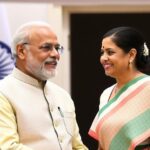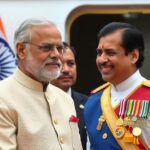Modi’s Visit to Sri Lanka: A Step Towards Stronger Defence and Energy Ties
Prime Minister Narendra Modi embarked on a significant visit to Sri Lanka, meeting with President Anura Kumara Dissanayake to discuss defense and energy agreements, including a pivotal solar power project. This visit underscores Sri Lanka’s delicate balancing act between India and China amid rising Chinese influence in the region.
Sri Lankan President Anura Kumara Dissanayake warmly received Prime Minister Narendra Modi on Saturday, reflecting the island’s effort to navigate its relationships with India and China. This visit marks Modi as the first foreign dignitary to be welcomed since Dissanayake took office, complete with a ceremonial 19-gun salute. The leaders are set to sign various agreements, notably an essential 120 megawatt solar power project that has been revitalized with India’s support, aiming to enhance energy solutions in Sri Lanka.
The Indian-backed solar power initiative will be situated in the northeastern Trincomalee district and is considered a significant project, as it had faced delays prior to Modi’s involvement. Upon his arrival late Friday evening, Modi expressed appreciation for his enthusiastic reception, highlighted by an honour guard parade at Independence Square in Colombo. This visit is crucial as Sri Lanka faces challenges balancing the strategic interests of both India and China, amid increasing Chinese influence in the region.
Dissanayake’s foreign policy maneuvering has been notable, with his inaugural trip to New Delhi followed by a January visit to Beijing. China ranks as Sri Lanka’s largest bilateral creditor, accounting for a significant portion of its approximate $14 billion debt, which became particularly concerning when the island defaulted on its sovereign obligations in 2022. Notably, China also played a pivotal role in restructuring its loans, aiding Sri Lanka during its recent economic crisis.
Furthermore, a substantial $3.7 billion oil refinery investment deal was established with a Chinese state-owned enterprise, marking this as Sri Lanka’s largest foreign investment to date. Amidst these developments, Modi’s trip follows a significant summit in Thailand focused on regional cooperation, where he engaged with leaders from neighboring countries, including Myanmar, Bangladesh, Nepal, and Bhutan, seeking to reinforce India’s diplomatic ties within the region.
In conclusion, Prime Minister Narendra Modi’s visit to Sri Lanka signifies a critical moment in the relationship between the two nations, as they explore vital collaborations in energy and defense. With Sri Lanka’s complex diplomatic positioning between India and China, this engagement aims to bolster India’s influence while addressing Sri Lanka’s needs for economic recovery and development.
Original Source: www.rfi.fr








Post Comment